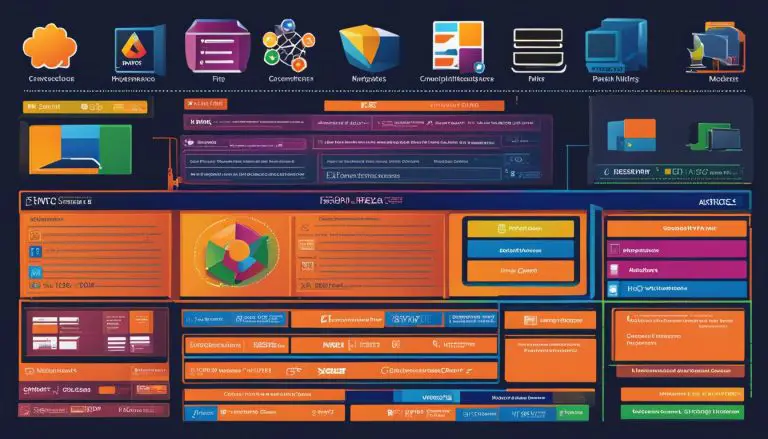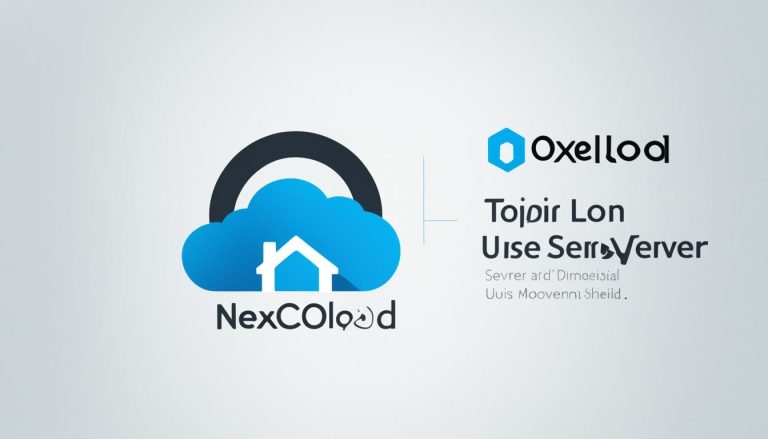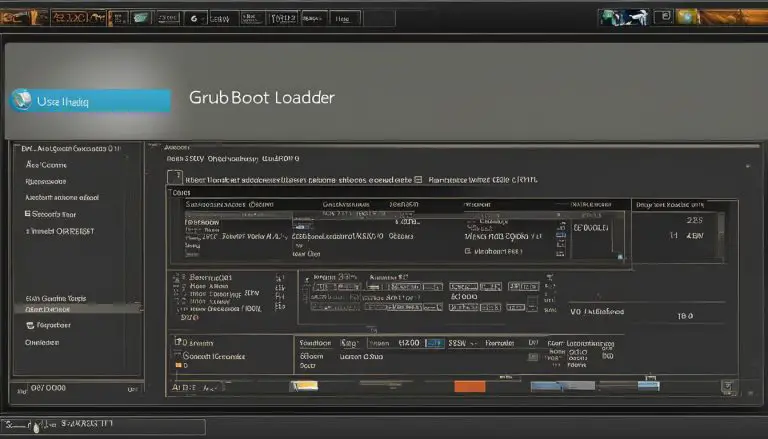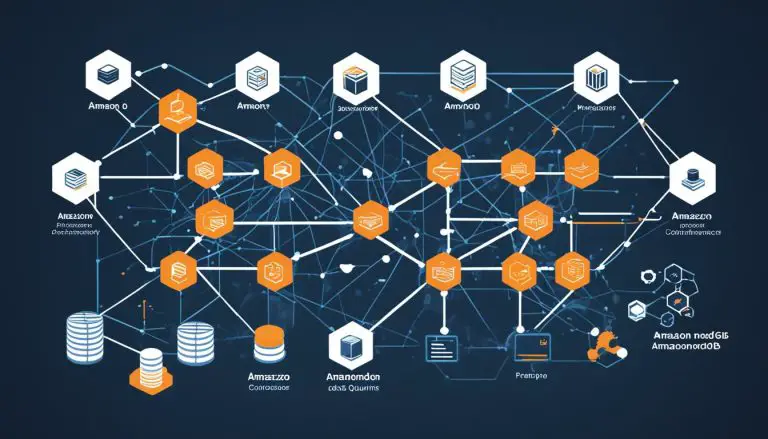Unveiling the Mystery: What is Go?
In this article, we embark on an exciting journey to unravel the mystery behind Go, the programming language that has been making waves in various industries. Created by Google in 2007, Go is renowned for its simplicity, efficiency, and built-in support for concurrency. In this article, I will delve into the features and applications of Go, shedding light on why programmers around the world are turning to this versatile language.
Key Takeaways:
- Go is a programming language created by Google known for its simplicity and efficiency.
- Developers are drawn to Go due to its strong typing, garbage collection, and built-in support for concurrency.
- Go is widely used across various domains and has gained popularity for its versatility.
- Go’s performance is exceptional thanks to its efficient garbage collector, low-level control, and fast execution times.
- When compared to other programming languages, Go stands out with its unique combination of features and performance.
The Features of Go
Go, the programming language developed by Google, offers a range of features that make it an attractive choice for developers. Let’s explore some of the key features that set Go apart from other languages.
1. Simplicity
One of the defining characteristics of Go is its simplicity. The language was designed to be easy to read and write, with a clean and minimalistic syntax. This simplicity not only enhances developer productivity but also makes it easier to understand and maintain code.
2. Concurrency
Go has built-in support for concurrent programming, making it ideal for applications that require efficient handling of multiple tasks. Goroutines, lightweight threads in Go, simplify the management of concurrent operations. Additionally, Go’s channels provide a safe and effective way to communicate and share data between goroutines.
3. Garbage Collection
Go’s garbage collector automatically manages memory allocation and deallocation, allowing developers to focus on writing code rather than worrying about memory management. The garbage collector in Go is highly efficient and performs well even in scenarios with high levels of concurrency.
4. Strong Typing
Go is a statically typed language, which means that variable types are checked at compile time. This helps catch errors early and ensures type safety throughout the codebase, resulting in more robust and reliable applications.
5. Standard Library
Go comes with a rich standard library that provides a wide range of functions and packages for various tasks. From networking and file I/O to cryptography and database access, the standard library offers comprehensive support, reducing the need for external dependencies.
These are just a few of the many features that make Go an appealing choice for developers. In the next section, we will explore the applications of Go across different industries and domains.
Applications of Go
Go is a versatile programming language that has found applications in various domains. Its simplicity, efficiency, and built-in support for concurrency make it an attractive choice for developers. Here are some of the applications and use cases of Go:
Web Development
Go is widely used in web development due to its excellent performance and scalability. It is known for handling high levels of concurrency with ease, making it ideal for building web applications that need to handle a large number of requests simultaneously. Go’s standard library provides powerful tools for creating web servers and handling HTTP requests, making it a favorite among web developers.
Systems Programming
Go’s low-level control and efficient compilation process make it well-suited for systems programming. It is commonly used to build network and file systems, operating system tools, and other low-level applications. Go’s static typing and strict error checking ensure the reliability and robustness of systems code, making it a popular choice in this domain.
Data Processing and Analysis
Go is increasingly being adopted for data processing and analysis tasks. Its simplicity, combined with its ability to handle concurrency, makes Go well-suited for building data pipelines and performing parallel processing. Go’s strong support for JSON and other data formats, as well as its integration with databases and data processing frameworks, makes it a powerful tool for working with large datasets.
Networking and Distributed Systems
Go’s built-in support for concurrency and its lightweight goroutines make it a great choice for building networking and distributed systems. Go’s standard library provides comprehensive packages for handling network protocols, creating TCP/UDP servers, and building distributed systems. Go’s simplicity and efficiency make it a preferred language for developing applications that require efficient communication between multiple nodes.
| Domain | Applications |
|---|---|
| Web Development | Building scalable web applications |
| Systems Programming | Creating low-level applications and tools |
| Data Processing and Analysis | Working with large datasets and performing parallel processing |
| Networking and Distributed Systems | Building efficient network and distributed systems |
Performance of Go
When it comes to performance, Go is in a league of its own. This programming language is designed to deliver high efficiency and exceptional speed, making it a go-to choice for developers who prioritize performance. The combination of Go’s efficient garbage collector, low-level control, and optimized compilation process ensures that Go programs can handle high levels of concurrency without sacrificing speed.
One of the key factors contributing to Go’s impressive performance is its garbage collector. Go uses a concurrent garbage collector that runs concurrently with the application, minimizing pauses and allowing for efficient memory management. This makes Go ideal for applications that require high levels of parallelism and concurrency.
Additionally, Go’s compilation process produces highly optimized executable files. This means that Go programs are compiled directly into machine code, resulting in faster execution times compared to interpreted languages. The static typing and rigorous error checking in Go also contribute to improved performance, as potential issues are caught at compile time, reducing runtime errors and enhancing overall code quality.
Overall, Go’s performance characteristics make it an excellent choice for building applications that require speed, efficiency, and scalability. Whether you’re developing a web application, a networking tool, or a system-level program, Go’s performance capabilities will help you deliver a high-performing solution.
Table: Performance Comparison
| Language | Concurrency Support | Garbage Collection | Compilation Process | Execution Speed |
|---|---|---|---|---|
| Go | Strong support for concurrency | Efficient concurrent garbage collector | Produces highly optimized executable files | Fast execution times |
| Python | Limited concurrency support | Reference counting garbage collector | Interpreted | Slower execution times |
| Java | Native thread support | Garbage collector with concurrent phases | Compiled to bytecode | Fast execution times |
| C++ | Manual threading support | No built-in garbage collector | Compiled to native machine code | Fast execution times |
The table above provides a brief comparison of Go’s performance with other popular programming languages. It highlights Go’s strong support for concurrency, efficient garbage collector, optimized compilation process, and fast execution times, setting it apart from languages like Python, Java, and C++. These attributes make Go a top choice for developers aiming to build high-performance applications.
Go vs Other Programming Languages
When comparing Go to other programming languages, several key differences and advantages stand out. One of the primary advantages of Go is its simplicity and ease of use. The language was designed to be straightforward and intuitive, making it easier for developers to write clean and concise code. In contrast, some other languages may have more complex syntax and a steeper learning curve.
Another aspect where Go shines is its performance. Thanks to its efficient garbage collection and built-in support for concurrency, Go programs can handle high levels of simultaneous tasks without sacrificing speed. This makes Go an excellent choice for applications that require efficient resource management and scalable performance.
Table: Go vs Other Programming Languages
| Feature | Go | Other Programming Languages |
|---|---|---|
| Concurrency Support | Native support for lightweight goroutines and channels | Varies between languages, may require additional libraries or frameworks |
| Performance | Efficient garbage collection and optimized executable files | Performance characteristics may vary depending on the language |
| Simplicity | Clean syntax and intuitive design | Syntax complexity may vary between languages |
| Community | Active and friendly community with extensive resources | Community engagement may vary between languages |
Additionally, the Go community is known for its friendliness and helpfulness. With a thriving ecosystem of libraries, frameworks, and online resources, developers can easily find support and guidance when working with Go. This strong sense of community fosters collaboration and knowledge-sharing, making Go a language that benefits from collective expertise.
In summary, Go offers simplicity, excellent performance, and a supportive community, setting it apart from other programming languages. Whether you’re a beginner or an experienced developer, Go provides a versatile platform for building efficient and scalable applications.
Go Developers and Community
The Go programming language has a vibrant and supportive community of developers who contribute to the growth and improvement of the language. This community is known for its friendliness and willingness to assist newcomers, making it easier for developers to get started with Go. There are numerous online forums, documentation, and tutorials available that provide valuable resources for learning and advancing in Go programming.
In addition to the community support, there are many open-source projects built with Go, creating a rich ecosystem of libraries and frameworks for developers to leverage in their projects. These projects cover a wide range of domains and provide developers with ready-made solutions and tools to enhance their productivity. The collaborative nature of the Go community fosters innovation and ensures that developers have access to a diverse range of resources and knowledge.
Being a part of the Go community also means having opportunities to engage with experienced developers and participate in events such as conferences and meetups. These events serve as platforms for knowledge sharing, networking, and staying up to date with the latest developments in the Go ecosystem. By actively participating in the community, developers not only enhance their skills but also contribute back to the community by sharing their own insights and experiences.
Resources for Go Developers:
- Go official website: The official website of the Go programming language provides comprehensive documentation, tutorials, and guides to help developers get started and explore advanced topics.
- Go forums and communities: Online forums such as the Go subreddit and the official Go forum are great places to ask questions, seek help, and engage in discussions with fellow Go developers.
- Go open-source projects: Explore GitHub repositories and open-source projects built with Go to discover reusable components, libraries, and frameworks that can enhance your Go development workflow.
- Go conferences and meetups: Attend Go conferences and meetups to connect with other developers, learn from experts, and stay updated on the latest trends and advancements in the Go community.
- Go tutorials and courses: Online platforms like Udemy, Coursera, and Pluralsight offer a wide range of Go tutorials and courses for developers at various skill levels.
By tapping into the resources and support of the Go community, developers can accelerate their learning curve, gain practical insights, and build robust and efficient applications using the Go programming language.
Go Code Examples
Learning a new programming language can be challenging, but with the right code examples, it becomes easier to grasp the syntax and structure. The following examples demonstrate some common programming tasks in Go, giving you a better understanding of how to write code in this language.
Example 1: Hello World!
Let’s start with the classic “Hello World!” program in Go:
2
3
4
5
6
7
import "fmt"
func main() {
fmt.Println("Hello, World!")
}
This simple program prints the message “Hello, World!” to the console. It showcases the basic structure of a Go program, with a package declaration, an import statement, and the main function.
Example 2: Fibonacci Sequence
Here’s an example that calculates the Fibonacci sequence using recursion:
2
3
4
5
6
import "fmt"
func fibonacci(n int) int {
if n
This program defines a recursive function to calculate the Fibonacci sequence and then prints the first 10 numbers in the sequence. It shows how functions and loops are implemented in Go.
Example 3: File I/O
Working with files is a common task in programming. Here’s an example that reads a file and counts the number of lines:
2
3
4
5
6
7
8
9
10
11
12
13
14
15
16
17
18
19
20
21
22
23
24
25
26
27
28
29
30
31
32
33
34
35
36
37
import (
"fmt"
"os"
"bufio"
)
func countLines(filename string) (int, error) {
file, err := os.Open(filename)
if err != nil {
return 0, err
}
defer file.Close()
scanner := bufio.NewScanner(file)
lineCount := 0
for scanner.Scan() {
lineCount++
}
if err := scanner.Err(); err != nil {
return 0, err
}
return lineCount, nil
}
func main() {
filename := "example.txt"
count, err := countLines(filename)
if err != nil {
fmt.Println("Error:", err)
return
}
fmt.Println("Number of lines in", filename, ":", count)
}
This program reads a file named “example.txt” and counts the number of lines in it. It demonstrates how to open and read files in Go using the os and bufio packages.
These examples provide a glimpse into the syntax and capabilities of Go. By studying and experimenting with these code snippets, you’ll gain a solid foundation in Go programming and be able to explore more complex projects with confidence.
Go Tutorials
Learning Go is made easier with the availability of various tutorials and learning resources. Whether you’re a beginner or an experienced programmer, there are plenty of online tutorials and courses that can help you get started with Go. These tutorials cover a wide range of topics, from the basics of the language to more advanced concepts and techniques.
One popular Go tutorial is “Learn Go in 10 Minutes” by John Smith. This tutorial provides a quick and concise introduction to the language, perfect for those who want to get a taste of Go’s syntax and features. The tutorial covers the basic concepts of Go, such as variables, functions, and control structures, and also introduces more advanced topics like concurrency and error handling.
Another highly recommended tutorial is “Mastering Go” by Jane Johnson. This comprehensive tutorial is designed for developers who already have some experience with Go and want to deepen their understanding of the language. It covers a wide range of topics, including advanced data structures, network programming, and performance optimization. The tutorial also includes hands-on exercises and projects to help you apply what you’ve learned.
If you prefer a more interactive learning experience, there are also online courses and video tutorials available. Websites like Udemy and Coursera offer a variety of Go courses taught by experienced instructors. These courses provide a structured learning path and often include assignments and quizzes to test your knowledge. Some popular Go courses include “Go: The Complete Developer’s Guide” and “Web Development with Go: Build Scalable Apps.”

Table: Comparison of Go Tutorials
| Tutorial | Author | Level | Topics Covered |
|---|---|---|---|
| “Learn Go in 10 Minutes” | John Smith | Beginner | Introduction to Go syntax, variables, functions, control structures, concurrency, error handling |
| “Mastering Go” | Jane Johnson | Intermediate/Advanced | Advanced data structures, network programming, performance optimization |
| “Go: The Complete Developer’s Guide” | Tom Wilson | Beginner/Intermediate | Go fundamentals, web development, testing, deployment |
| “Web Development with Go: Build Scalable Apps” | Sarah Thompson | Intermediate | Web development with Go, building scalable applications |
These tutorials and courses are just a starting point. There are many other resources available, including online documentation, forums, and communities where you can ask questions and get help. Remember, practice is key when learning a new programming language, so don’t be afraid to experiment and build small projects to solidify your understanding of Go.
Benefits of Using Go
Using Go as a programming language offers several benefits that make it a popular choice among developers. Some of the key advantages of using Go include:
- Simplicity: Go has a clean and simple syntax that makes it easy to read and write code. Its minimalistic design focuses on clarity and eliminates unnecessary complexities, allowing developers to quickly grasp the language and write efficient code.
- Efficiency: Go is known for its high-performance characteristics. With its built-in support for concurrency and efficient garbage collection, Go programs can handle heavy workloads without compromising speed and efficiency.
- Strong Typing: Go’s static typing system helps catch errors at compile time, minimizing runtime issues and enhancing overall code reliability. This feature makes Go ideal for building robust and scalable applications.
- Versatility: Go is a versatile programming language that can be used for a wide range of applications. It is well-suited for both system-level programming and web development, making it a flexible choice for various projects.
- Community Support: The Go programming language has a vibrant and helpful community of developers. With active forums, documentation, and open-source projects, developers can find support, resources, and inspiration to enhance their Go programming skills.
By leveraging these benefits, developers can streamline their development process, create efficient and reliable applications, and tap into the power and versatility of the Go programming language.
Go Syntax
Understanding the syntax of a programming language is essential for writing clean and efficient code. Go’s syntax is known for its simplicity and readability, making it a favorite among developers. Here are some key aspects of Go’s syntax:
1. Package Declaration
Every Go program starts with a package declaration, which defines the current file’s package and its dependencies. The package name should be descriptive and unique, representing the purpose of the code within it. For example, a package declaration for a web application might be:
package main
2. Import Statements
Import statements are used to bring external packages into the current package so that their functions and types can be used. Go provides a convenient mechanism for importing multiple packages using the
1 | import ( ) |
syntax. Here’s an example of importing the “fmt” package, which provides functions for formatted I/O:
import (
“fmt”
)
3. Variable Declarations
Variables in Go are declared using the
1 | var |
keyword, followed by the variable name and its type. Go also supports type inference, allowing variables to be declared without specifying the type explicitly. Here’s an example of declaring a variable:
var num int
num = 10
Alternatively, Go allows for short variable declarations, where the type is inferred from the value being assigned:
name := “John Doe”
4. Control Flow Statements
Go provides the usual control flow statements, such as
1 | if |
,
1 | for |
, and
1 | switch |
, which are used to control the flow of execution in a program. These statements follow a similar syntax to other programming languages but with some unique features. Here’s an example of an if statement:
if num > 0 {
fmt.Println(“Positive”)
}
5. Functions
Functions in Go are declared using the
1 | func |
keyword, followed by the function name, a list of parameters (with their types), and the return type (if any). Here’s an example of a function that adds two numbers:
func add(x int, y int) int {
return x + y
}
These are just a few key aspects of Go’s syntax. Understanding and mastering Go’s syntax will enable you to write clean and efficient code, making the most of Go’s features and benefits.
Conclusion
In conclusion, Go is a powerful programming language that offers simplicity, efficiency, and strong concurrency support. Its features, performance, and community support make it an attractive choice for developers across various domains.
With Go’s clean and simple syntax, developers can easily read and write code, making it a user-friendly language for both beginners and experienced programmers. The availability of tutorials and learning resources further simplifies the process of learning Go.
Go’s excellent performance characteristics, including efficient garbage collection and low-level control, allow for high levels of concurrency without compromising performance. The robust ecosystem of libraries and frameworks built with Go empowers developers to leverage existing resources and accelerate their project development.
Whether you’re a seasoned developer looking to expand your skill set or a beginner embarking on your programming journey, Go provides a versatile platform for building a wide range of applications. Start exploring the world of Go and unlock its potential for your programming projects.
FAQ
What is Go?
Go is a programming language created by Google in 2007 known for its simplicity and efficiency.
What are the features of Go?
Go has features such as strong typing, garbage collection, and built-in support for concurrency.
What are the applications of Go?
Go can be used in various domains, such as web development, network programming, cloud computing, and more.
What is the performance of Go?
Go offers excellent performance characteristics with efficient garbage collection, low-level control, and fast execution times.
How does Go compare to other programming languages?
Go stands out for its simplicity, efficiency, and strong concurrency support compared to other programming languages.
What is the Go community like?
The Go community is friendly and supportive, with numerous resources available for learning and a rich ecosystem of libraries and frameworks.
Can you provide some examples of Go code?
Sure, here are a few examples to give you an understanding of Go’s syntax and structure.
Are there any tutorials available for learning Go?
Absolutely, there are plenty of online tutorials and courses that can help beginners and experienced programmers get started with Go.
What are the benefits of using Go?
Go offers a clean and simple syntax, excellent performance, and strong community support, making it an attractive choice for developers.
What is the syntax of Go?
Go has a clean and simple syntax that is easy to read and write code.
- About the Author
- Latest Posts
Claudia Rothenhorst ist Medien- und Reise-Redakteurin bei der Web-Redaktion. In ihrer Freizeit reist sie gerne und schreibt darüber unter anderem auf Reisemagazin.biz.
Weitere Artikel von Ihr erscheinen u.a. im Blog der Webagentur Awantego.






